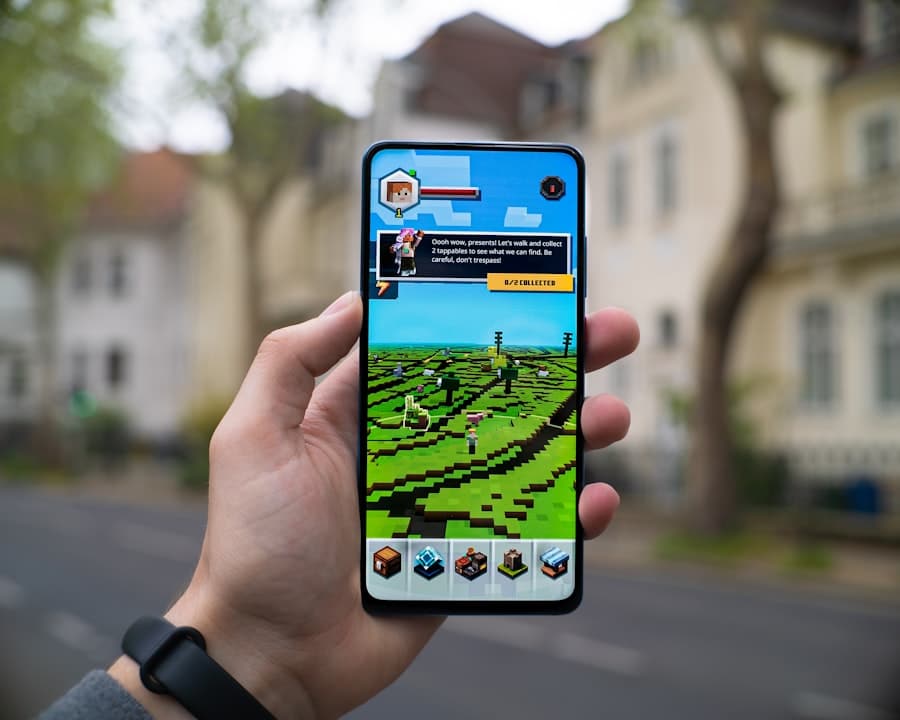Augmented Reality (AR) is a transformative technology that overlays digital information onto the real world, enhancing the user’s perception of their environment. Unlike Virtual Reality (VR), which immerses users in a completely digital realm, AR enriches the physical world with interactive elements, such as images, sounds, and text. This technology has gained significant traction in various fields, including gaming, healthcare, and retail, but its potential in education is particularly noteworthy.
By integrating AR into educational materials, educators can create immersive learning experiences that captivate students and facilitate deeper understanding. The concept of AR is not entirely new; it has roots in the early 1990s when researchers began exploring ways to blend digital content with the physical world. However, advancements in mobile technology, computer vision, and graphics have propelled AR into the mainstream.
Today, devices such as smartphones and tablets serve as gateways to AR experiences, making it accessible to a broader audience. As educational institutions increasingly seek innovative methods to engage students and enhance learning outcomes, AR stands out as a promising tool that can bridge the gap between theoretical knowledge and practical application.
Key Takeaways
- AR enhances the real world with digital information, making it an interactive and engaging experience for users.
- Using AR in educational materials can improve student engagement, comprehension, and retention of information.
- Examples of AR integration in educational materials include interactive textbooks, 3D models, and virtual field trips.
- AR can engage students in learning by providing immersive and interactive experiences that cater to different learning styles.
- AR has the potential to improve retention and comprehension by providing visual and interactive learning experiences.
- The future of AR in education holds promise for more advanced and widespread integration in classrooms.
- Challenges and limitations of AR in educational materials include cost, access to technology, and potential distractions.
- Recommendations for implementing AR in educational settings include providing training for educators, ensuring access to necessary technology, and evaluating the effectiveness of AR integration.
The Benefits of Using AR in Educational Materials
Enhancing Understanding of Complex Concepts
One of the most compelling advantages of AR in education is the ability to present complex concepts in a more digestible format. For instance, subjects like anatomy or physics can be challenging for students to grasp through traditional textbooks alone. AR can visualize these concepts by allowing students to interact with 3D models of human organs or physical phenomena, making abstract ideas more tangible and easier to understand.
Fostering Interactive Learning
AR fosters an interactive learning environment that encourages active participation. Traditional educational methods often rely on passive learning, where students absorb information without engaging with it critically. In contrast, AR promotes exploration and experimentation. Students can manipulate virtual objects, conduct simulations, and engage in problem-solving activities that require them to apply their knowledge in real-time.
Cultivating Critical Thinking and Creativity
This hands-on approach not only makes learning more enjoyable but also cultivates critical thinking skills and creativity. By allowing students to engage with complex concepts in a more interactive and immersive way, AR has the potential to revolutionize the way we learn and retain information.
Examples of AR Integration in Educational Materials
Numerous educational institutions and companies have begun to harness the power of AR to create innovative learning materials. One notable example is the use of AR in science education through applications like “Merge Cube.” This device allows students to hold a physical cube that, when viewed through a smartphone or tablet, transforms into a 3D hologram of various scientific phenomena. For instance, students can explore the solar system by visualizing planets rotating around the sun or dissecting a virtual frog to learn about anatomy.
Such applications provide an engaging way for students to interact with scientific concepts that would otherwise be difficult to visualize. Another example is the “Google Expeditions” app, which enables teachers to take students on virtual field trips using AR technology. With this app, students can explore historical landmarks, dive into the ocean’s depths, or even walk on Mars—all from their classroom.
This immersive experience not only broadens students’ horizons but also allows them to connect theoretical knowledge with real-world contexts. By integrating AR into educational materials, educators can create rich, interactive experiences that enhance learning and foster curiosity.
The Role of AR in Engaging Students in Learning
Engagement is a critical factor in effective learning, and AR has proven to be a powerful tool for capturing students’ attention. The novelty of augmented reality often piques students’ interest, making them more eager to participate in lessons. When students are excited about what they are learning, they are more likely to invest time and effort into their studies.
This heightened engagement can lead to improved academic performance and a more positive attitude toward education overall. Furthermore, AR can cater to diverse learning styles and preferences. Visual learners benefit from the vivid imagery and interactive elements that AR provides, while kinesthetic learners thrive on the hands-on experiences that come with manipulating virtual objects.
By accommodating various learning styles, AR ensures that all students have the opportunity to engage with the material in a way that resonates with them personally. This inclusivity not only enhances individual learning outcomes but also fosters a collaborative classroom environment where students can share their unique perspectives and insights.
The Impact of AR on Improving Retention and Comprehension
Research has shown that interactive learning experiences significantly enhance retention and comprehension compared to traditional methods. When students engage with material through AR, they are more likely to remember what they have learned because they are actively involved in the learning process. The multisensory nature of AR—combining visual, auditory, and tactile elements—creates a richer learning experience that reinforces memory retention.
For example, studies have indicated that students who use AR applications to learn complex subjects demonstrate higher retention rates than those who rely solely on textbooks or lectures. This is particularly evident in subjects like mathematics and science, where visualizing problems and solutions can lead to a deeper understanding of underlying principles. By providing immediate feedback and opportunities for self-assessment through interactive simulations, AR empowers students to take ownership of their learning journey and reinforces their comprehension of challenging concepts.
The Future of AR in Education
As technology continues to evolve, the future of AR in education appears promising. With advancements in hardware and software capabilities, we can expect even more sophisticated AR applications that will further enhance the learning experience. For instance, developments in artificial intelligence could enable personalized learning experiences tailored to individual student needs.
Moreover, as educational institutions increasingly embrace blended learning models that combine online and face-to-face instruction, AR will play a crucial role in bridging these two modalities. By integrating AR into online courses or remote learning environments, educators can create immersive experiences that replicate the interactivity of traditional classrooms.
This adaptability will be essential as education continues to evolve in response to changing societal needs and technological advancements.
Challenges and Limitations of AR in Educational Materials
Despite its many advantages, the implementation of AR in educational materials is not without challenges. One significant barrier is the cost associated with developing and deploying AR content. Creating high-quality AR experiences often requires substantial investment in technology and expertise, which may be prohibitive for some educational institutions—especially those with limited budgets.
Additionally, maintaining up-to-date hardware and software can pose ongoing financial challenges. Another limitation is the potential for technical issues during implementation. Not all students may have access to compatible devices or reliable internet connections necessary for optimal AR experiences.
Furthermore, educators may require training to effectively integrate AR into their teaching practices. Without proper support and resources, the potential benefits of AR may not be fully realized.
Recommendations for Implementing AR in Educational Settings
To successfully implement AR in educational settings, several recommendations can be made for educators and administrators alike. First and foremost, it is essential to conduct thorough research on available AR tools and applications before selecting those that align with curriculum goals and student needs. Collaborating with technology experts or partnering with educational technology companies can provide valuable insights into best practices for integration.
Additionally, professional development opportunities should be provided for educators to familiarize them with AR technology and its pedagogical implications. Training sessions can empower teachers to confidently incorporate AR into their lesson plans while also addressing any technical challenges they may encounter. Finally, fostering a culture of experimentation within educational institutions can encourage educators to explore innovative uses of AR without fear of failure.
By creating an environment where teachers feel supported in trying new approaches, schools can unlock the full potential of augmented reality as a transformative educational tool that enhances student engagement and learning outcomes.
In a related article discussing the best tablet with a SIM card slot, it is evident that technology continues to revolutionize the way we access educational materials. Tablets with SIM card slots offer students the flexibility to access online resources and collaborate with peers from anywhere. This aligns with the idea of using AR to enhance educational materials, as both technologies aim to make learning more interactive and engaging. To learn more about the best tablet options for students, check out this article.
FAQs
What is AR?
AR stands for Augmented Reality, which is a technology that superimposes digital information such as images, videos, or 3D models onto the real world environment, typically viewed through a smartphone, tablet, or AR glasses.
How does AR enhance educational materials?
AR enhances educational materials by providing interactive and immersive experiences for students. It allows students to visualize complex concepts, interact with 3D models, and engage in hands-on learning experiences that are not possible with traditional educational materials.
What are the benefits of using AR in education?
Some benefits of using AR in education include increased student engagement, improved retention of information, enhanced understanding of complex concepts, and the ability to cater to different learning styles. AR also provides opportunities for collaborative learning and real-world applications.
What are some examples of AR-enhanced educational materials?
Examples of AR-enhanced educational materials include interactive textbooks with 3D models, AR-enabled science experiments, virtual field trips using AR, and language learning apps that use AR to provide immersive language practice.
How accessible is AR technology for educational use?
AR technology is becoming increasingly accessible for educational use, with many educational institutions and organizations developing AR-enhanced materials and applications. Additionally, the widespread use of smartphones and tablets makes AR technology more readily available to students.
What are the potential challenges of integrating AR into education?
Challenges of integrating AR into education may include the cost of implementing AR technology, the need for teacher training and support, and ensuring equitable access to AR-enhanced materials for all students. Additionally, there may be concerns about potential distractions or over-reliance on technology.



